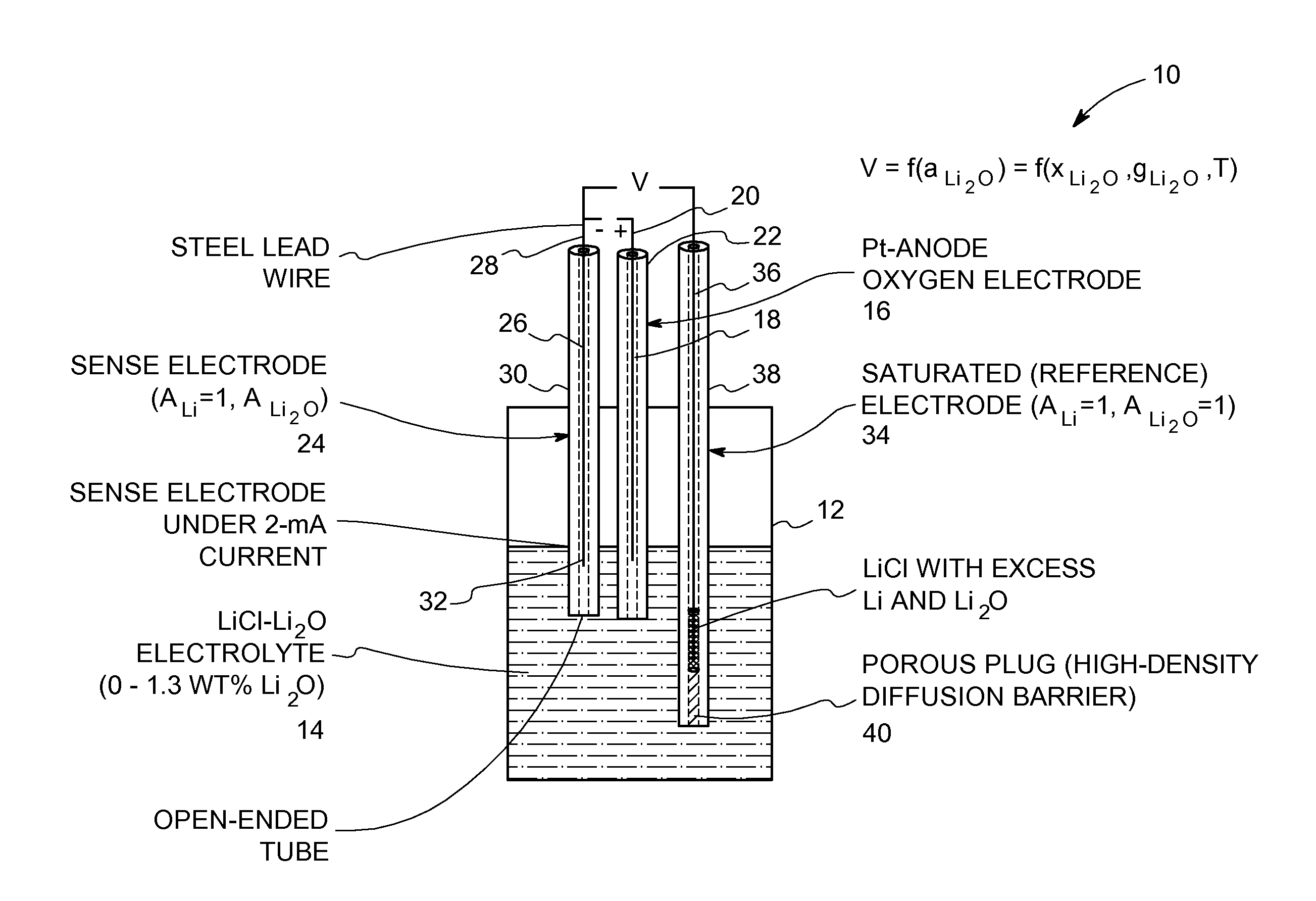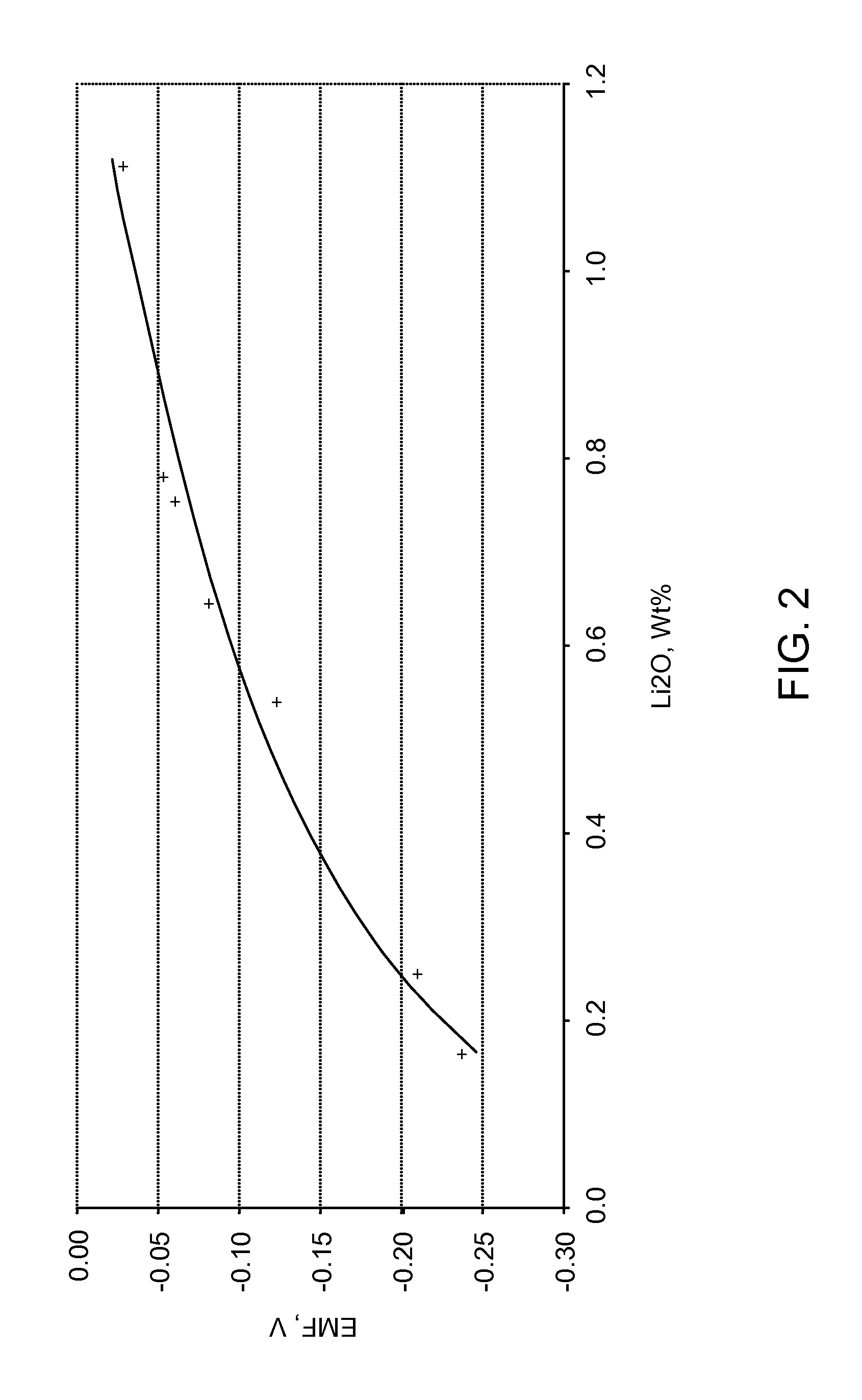Oxide-ion sensor for use in a molten-salt based electrochemical reduction process
a technology of molten salt and electrochemical reduction, applied in the direction of liquid/fluent solid measurement, material electrochemical variables, instruments, etc., can solve the problem of not having a reliable apparatus and method for doing so
- Summary
- Abstract
- Description
- Claims
- Application Information
AI Technical Summary
Benefits of technology
Problems solved by technology
Method used
Image
Examples
Embodiment Construction
[0023]Referring now to FIG. 1, an oxide-ion sensor for use in a molten-salt based electrochemical process is shown generally at 10 according to an embodiment of the invention. The sensor 10 includes a crucible 12 made of an electrically insulated material, such as ceramic, high-density MgO, and the like. The crucible 12 can also be made of a metallic material that is coated with an electrically isolated material. An electrolyte 14 is contained within the crucible 12. The electrolyte 14 is an appropriate halide salt or mixture of halide salts containing a soluble oxide, for example, LiCl—Li2O or CaCl2—CaO. Fluoride salts can also be used. The choice of the electrolyte depends on the metal-oxide being reduced. For example, CaCl2—CaO or CuF2—CuCl2—CuO, or some other suitable Ca-based electrolyte is preferred for the reduction of rare-earth oxides. In addition, the process temperature is dependent on the melting point of the electrolyte. As a result, the process temperature is about 200...
PUM
 Login to View More
Login to View More Abstract
Description
Claims
Application Information
 Login to View More
Login to View More - R&D
- Intellectual Property
- Life Sciences
- Materials
- Tech Scout
- Unparalleled Data Quality
- Higher Quality Content
- 60% Fewer Hallucinations
Browse by: Latest US Patents, China's latest patents, Technical Efficacy Thesaurus, Application Domain, Technology Topic, Popular Technical Reports.
© 2025 PatSnap. All rights reserved.Legal|Privacy policy|Modern Slavery Act Transparency Statement|Sitemap|About US| Contact US: help@patsnap.com



